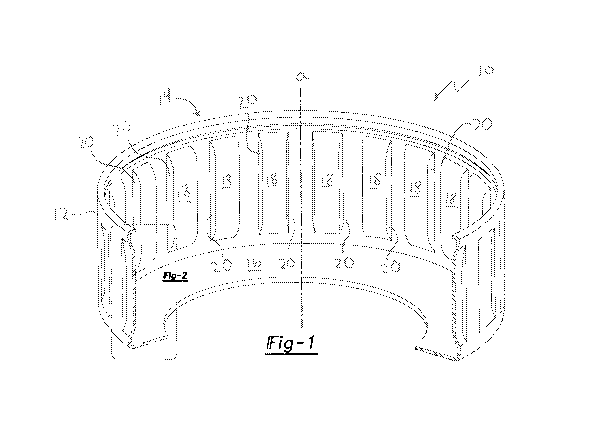Some of the information on this Web page has been provided by external sources. The Government of Canada is not responsible for the accuracy, reliability or currency of the information supplied by external sources. Users wishing to rely upon this information should consult directly with the source of the information. Content provided by external sources is not subject to official languages, privacy and accessibility requirements.
Any discrepancies in the text and image of the Claims and Abstract are due to differing posting times. Text of the Claims and Abstract are posted:
| (12) Patent Application: | (11) CA 2844753 |
|---|---|
| (54) English Title: | LANCE-AND-FORM SPLINES WITH FORMED HOUSING LIP SNAP RING RETENTION |
| (54) French Title: | CANNELURES DE PERFORATION ET FORMATION PRESENTANT UNE RETENTION A CLIP CIRCULAIRE A LEVRE DE LOGEMENT FORME |
| Status: | Deemed Abandoned and Beyond the Period of Reinstatement - Pending Response to Notice of Disregarded Communication |
| (51) International Patent Classification (IPC): |
|
|---|---|
| (72) Inventors : |
|
| (73) Owners : |
|
| (71) Applicants : |
|
| (74) Agent: | GOWLING WLG (CANADA) LLP |
| (74) Associate agent: | |
| (45) Issued: | |
| (86) PCT Filing Date: | 2012-08-13 |
| (87) Open to Public Inspection: | 2013-02-21 |
| Examination requested: | 2015-08-25 |
| Availability of licence: | N/A |
| Dedicated to the Public: | N/A |
| (25) Language of filing: | English |
| Patent Cooperation Treaty (PCT): | Yes |
|---|---|
| (86) PCT Filing Number: | PCT/US2012/050584 |
| (87) International Publication Number: | US2012050584 |
| (85) National Entry: | 2014-02-10 |
| (30) Application Priority Data: | |||||||||
|---|---|---|---|---|---|---|---|---|---|
|
A housing for use with a clutch assembly includes an annular wall disposed around an axis and extending between an open end of the housing and a floor of the housing with the floor extending toward the axis. A plurality of splines are spaced around the annular wall and extends between the open end and the floor. The splines define a work surface for engaging teeth of a clutch plate with the work surface being fractured from the annular wall providing a substantially normal relationship to the annular wall.
La présente invention concerne un logement devant être utilisé avec un ensemble embrayage, qui comprend une paroi annulaire disposée autour d'un axe et s'étendant entre une extrémité ouverte du logement et un fond du logement, le fond s'étendant vers l'axe. Plusieurs cannelures sont espacées sur la paroi annulaire et s'étendent entre l'extrémité ouverte et le fond. Les cannelures définissent une surface de travail pour des dents de mise en prise d'un plateau d'embrayage, la surface de travail étant séparée de la paroi annulaire ce qui forme une relation sensiblement normale avec la paroi annulaire.
Note: Claims are shown in the official language in which they were submitted.
Note: Descriptions are shown in the official language in which they were submitted.

2024-08-01:As part of the Next Generation Patents (NGP) transition, the Canadian Patents Database (CPD) now contains a more detailed Event History, which replicates the Event Log of our new back-office solution.
Please note that "Inactive:" events refers to events no longer in use in our new back-office solution.
For a clearer understanding of the status of the application/patent presented on this page, the site Disclaimer , as well as the definitions for Patent , Event History , Maintenance Fee and Payment History should be consulted.
| Description | Date |
|---|---|
| Time Limit for Reversal Expired | 2017-08-15 |
| Application Not Reinstated by Deadline | 2017-08-15 |
| Deemed Abandoned - Failure to Respond to Maintenance Fee Notice | 2016-08-15 |
| Letter Sent | 2015-09-01 |
| Request for Examination Received | 2015-08-25 |
| Request for Examination Requirements Determined Compliant | 2015-08-25 |
| All Requirements for Examination Determined Compliant | 2015-08-25 |
| Inactive: First IPC assigned | 2014-04-04 |
| Inactive: IPC assigned | 2014-04-04 |
| Inactive: IPC assigned | 2014-04-04 |
| Inactive: IPC removed | 2014-04-04 |
| Inactive: Cover page published | 2014-03-24 |
| Inactive: Notice - National entry - No RFE | 2014-03-14 |
| Inactive: Applicant deleted | 2014-03-14 |
| Inactive: IPC assigned | 2014-03-14 |
| Inactive: First IPC assigned | 2014-03-14 |
| Application Received - PCT | 2014-03-14 |
| National Entry Requirements Determined Compliant | 2014-02-10 |
| Application Published (Open to Public Inspection) | 2013-02-21 |
| Abandonment Date | Reason | Reinstatement Date |
|---|---|---|
| 2016-08-15 |
The last payment was received on 2015-07-29
Note : If the full payment has not been received on or before the date indicated, a further fee may be required which may be one of the following
Patent fees are adjusted on the 1st of January every year. The amounts above are the current amounts if received by December 31 of the current year.
Please refer to the CIPO
Patent Fees
web page to see all current fee amounts.
| Fee Type | Anniversary Year | Due Date | Paid Date |
|---|---|---|---|
| Basic national fee - standard | 2014-02-10 | ||
| MF (application, 2nd anniv.) - standard | 02 | 2014-08-13 | 2014-07-21 |
| MF (application, 3rd anniv.) - standard | 03 | 2015-08-13 | 2015-07-29 |
| Request for examination - standard | 2015-08-25 |
Note: Records showing the ownership history in alphabetical order.
| Current Owners on Record |
|---|
| VALUE EXTRACTION LLC |
| SZUBA CONSULTING, INC. |
| Past Owners on Record |
|---|
| JOSEPH SZUBA |